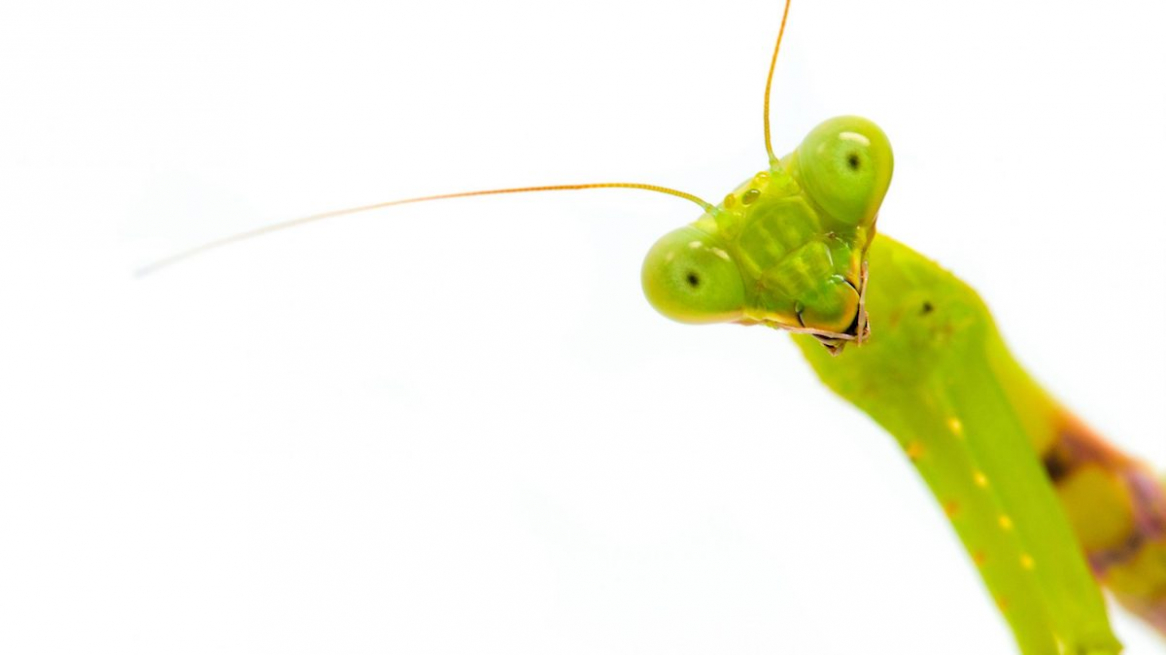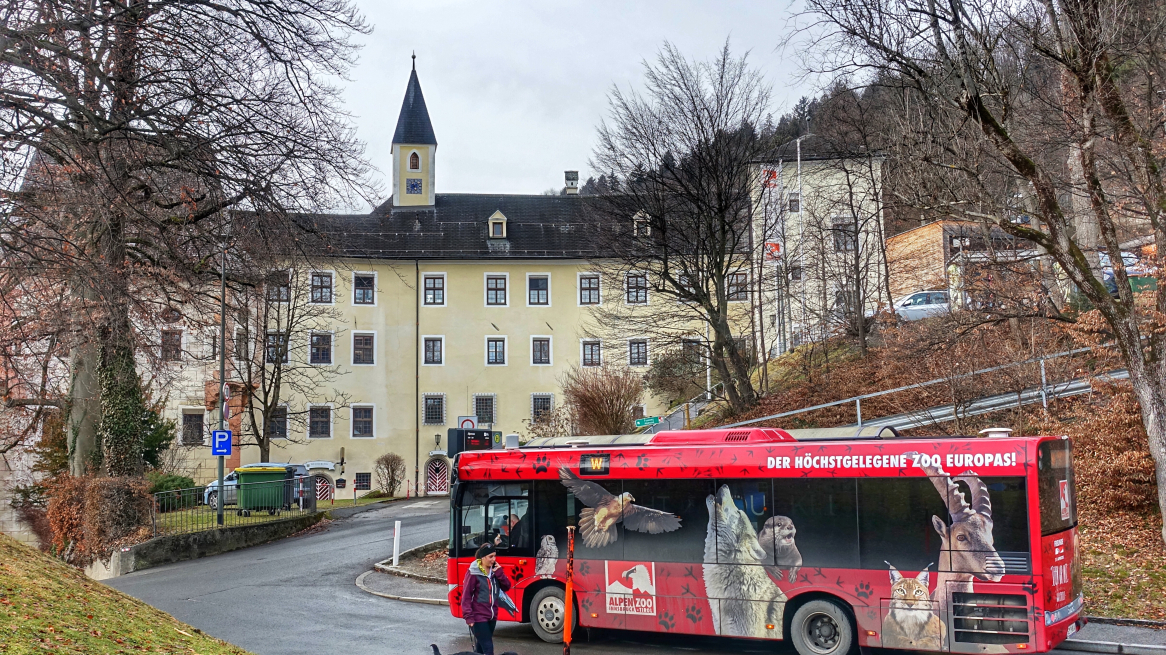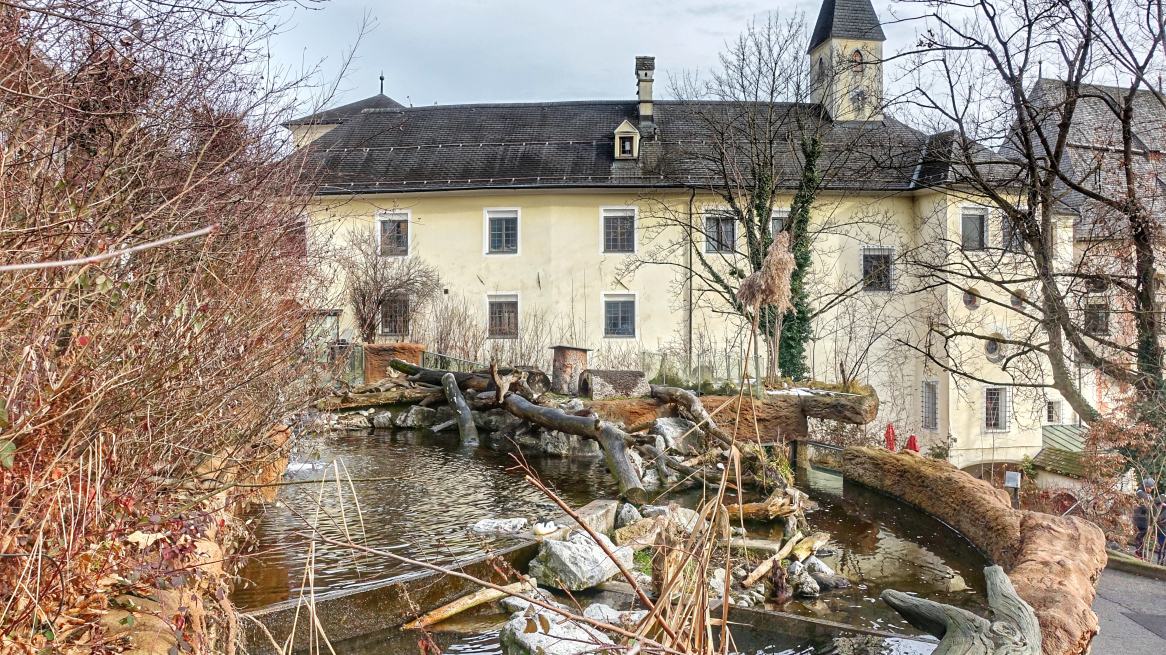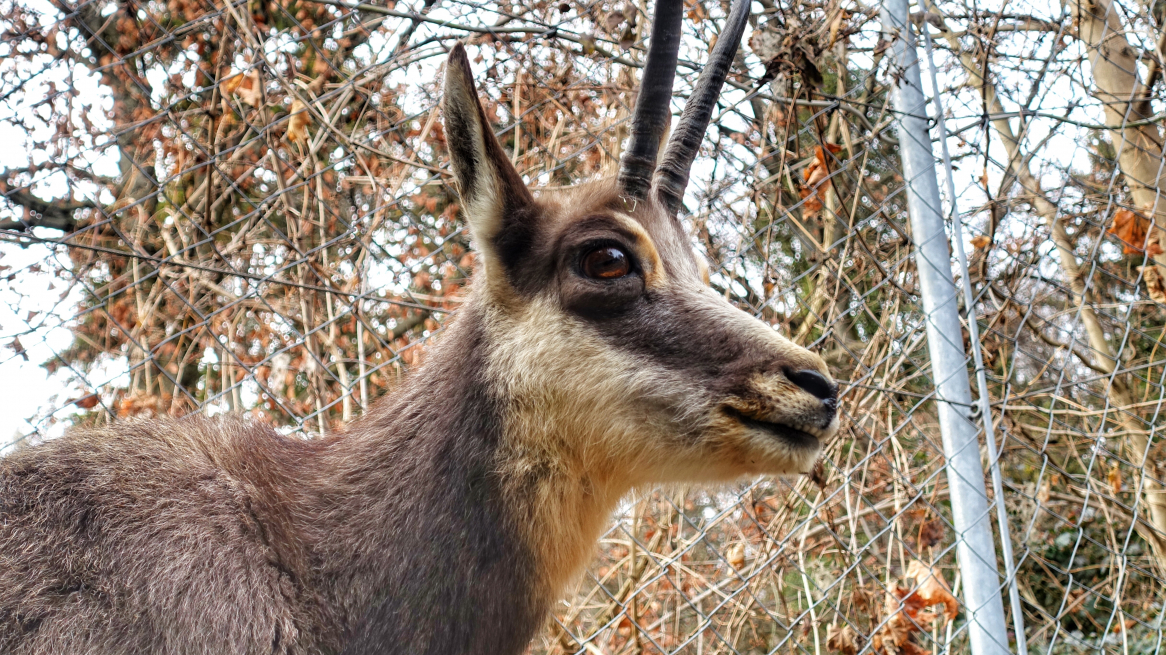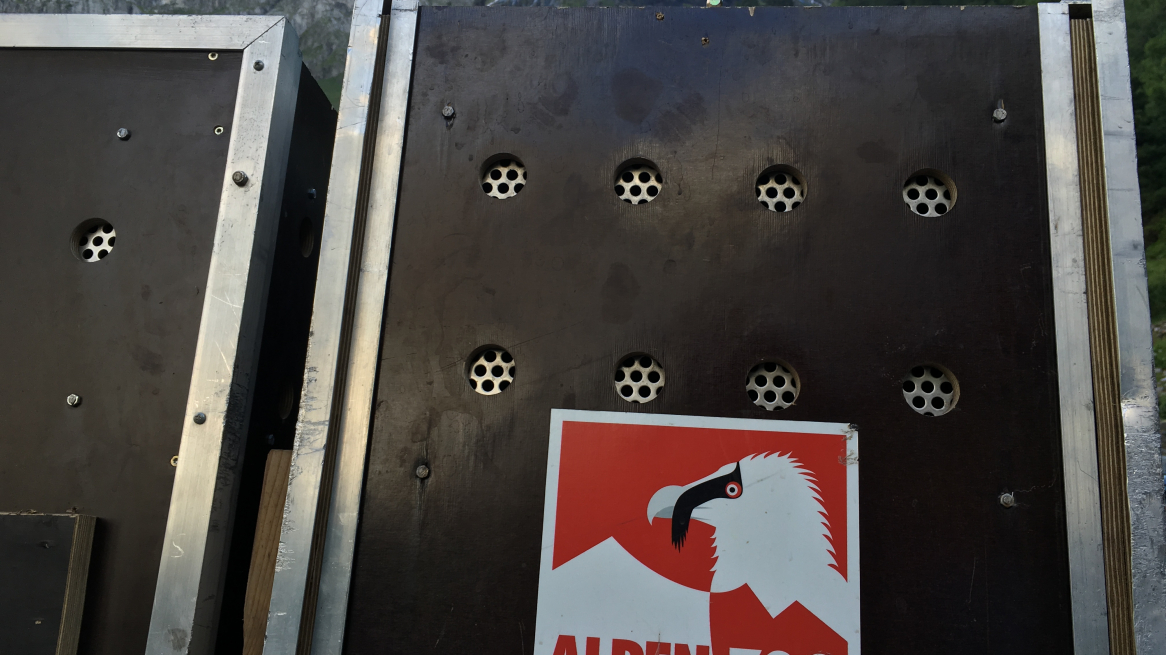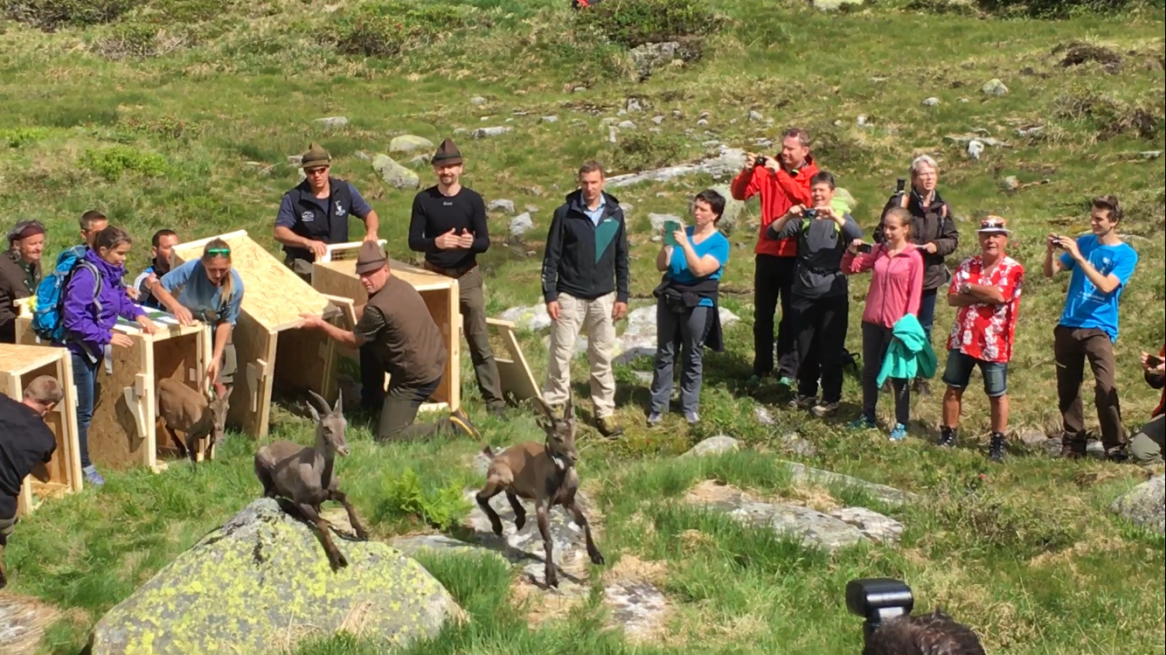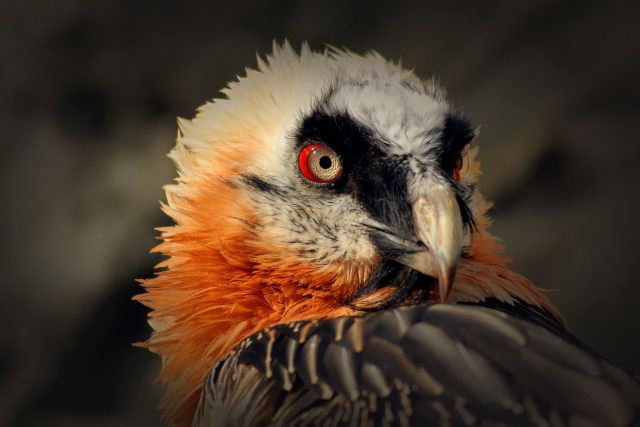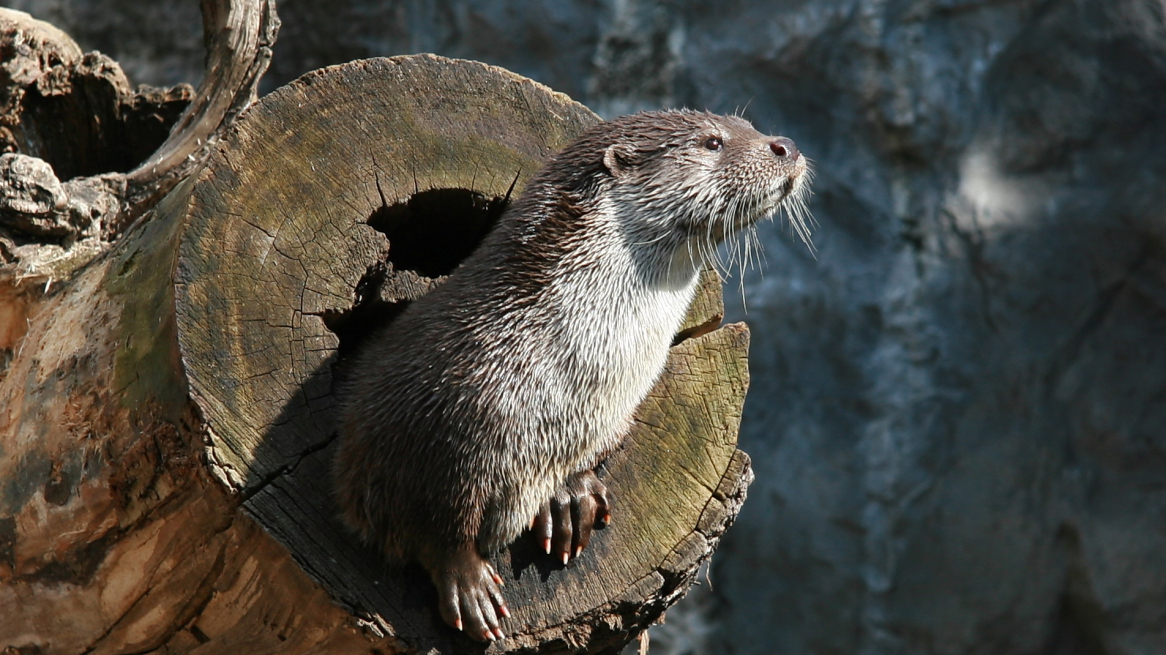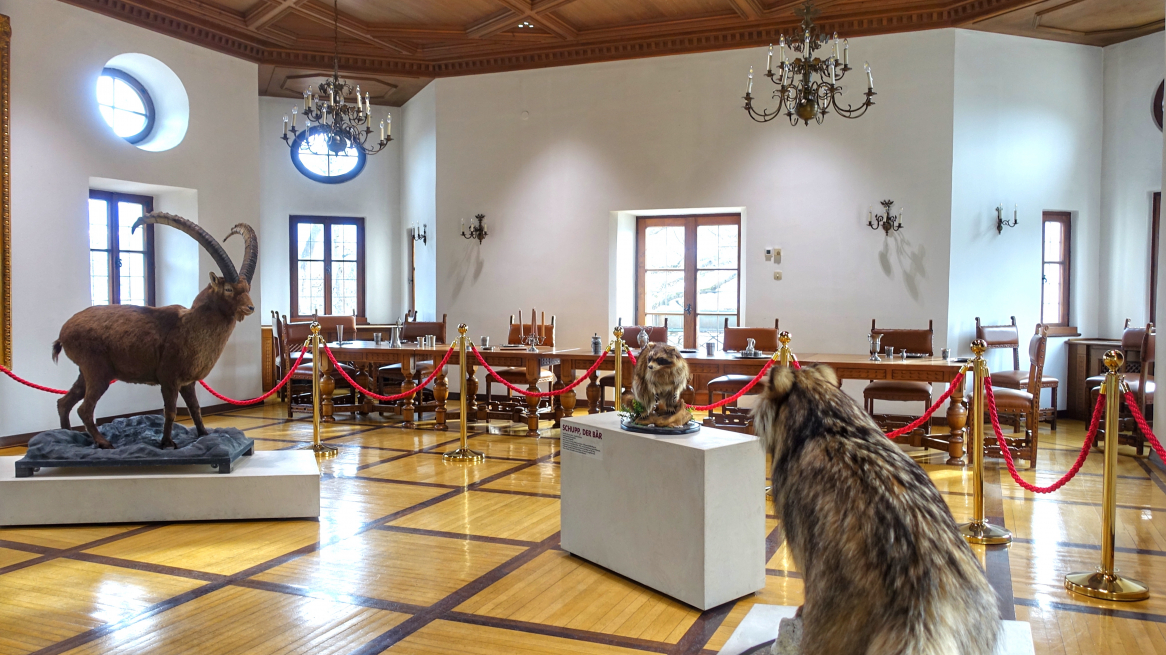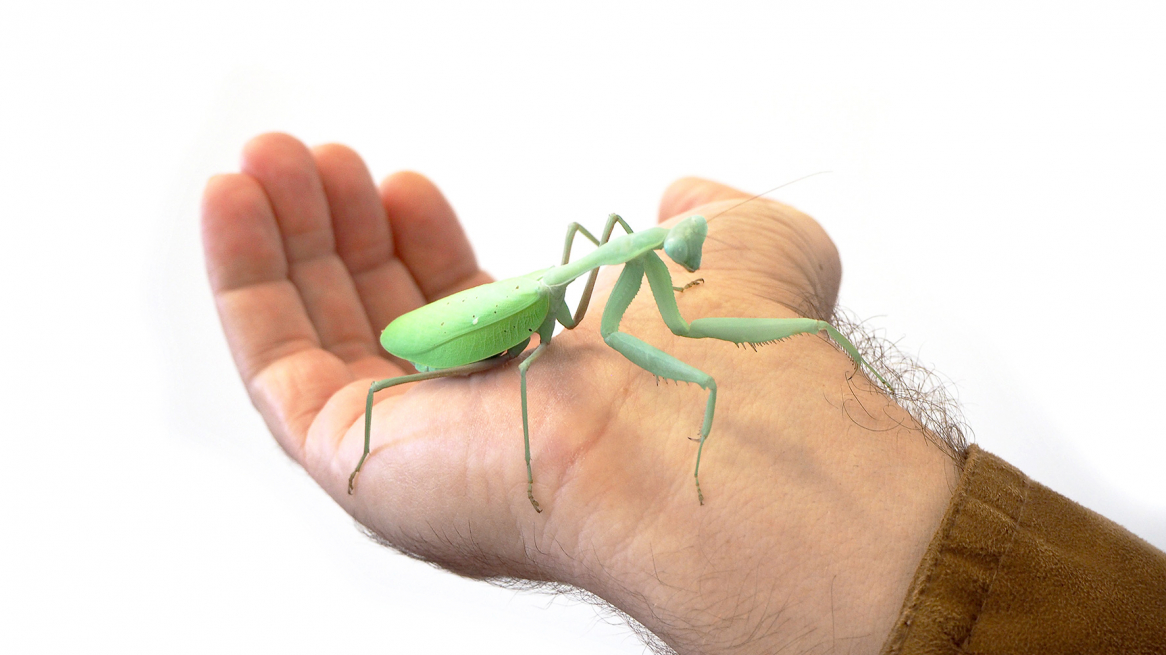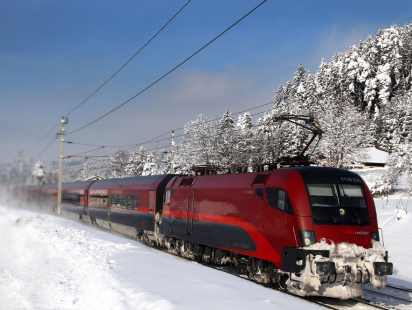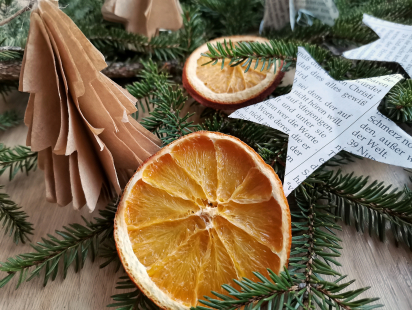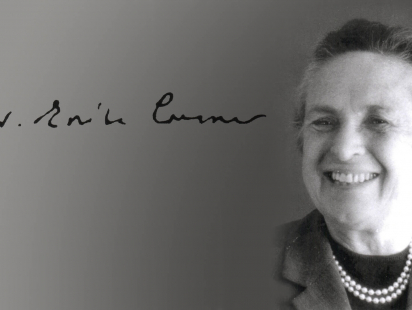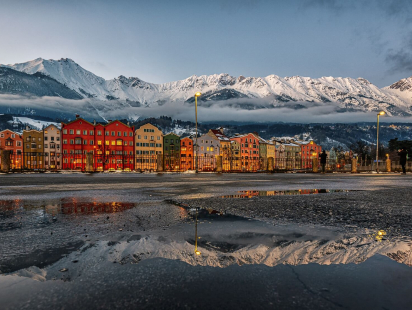The zoo is at the cradle of my love for Tyrol. It awakened in me the longing that still binds me to this land today. The impetus for this was given by its legendary founder, Prof. Hans Psenner. Week after week, he described various animal species on the regional radio station Tirol-Vorarlberg. His program was always designed as a walk through 'his zoo' with an imaginary school class. He was very fond of vultures, I think it was bearded vultures, and I can still remember that. In any case, I was a regular listener to his program.
A real luxury: with the 'Zoobus' in front of the entrance of the Alpenzoo. Image: W. Kräutler
The Weiherburg dominates the silhouette of the Alpenzoo. In the foreground the otter pond: Image: W. Kräutler
Didactically excellently designed
When I visited the Alpine Zoo for the first time in my student days, which Hans Psenner had founded in 1962, I entered a unique facility. In my eyes, the Alpine Zoo is an ingenious combination of a relaxed, easy mountain hike with didactically excellently prepared presentations of animals and plants. If there were an example of an exemplary 'educational and hiking trail', it would be the Alpenzoo. This is apparently also what makes it so attractive for animal lovers, families and school classes. Varied and interesting. And, by the way, with a fantastic view of Innsbruck. The icing on the cake: the zoo can be reached by public transport from the market square.
The Alpine Zoo as a 'breeding station' for alpine species
I am by no means a fan of conventional zoos. When lions, polar bears and monkeys are on display, for example, I'm not one of the zoo visitors. It's very different with the Alpine Zoo. The founder, Hans Psenner, planned to breed vultures here that could later be released in the Alps. In recent decades, the Alpine Zoo has developed into an indispensable 'breeding facility' for endangered Alpine animal breeds. Tyrol's ibex and chamois herds would be unthinkable without the Alpine Zoo.
What a positive and important impact the Alpine Zoo has on the animal world in the Alps, I was able to experience quasi 'up close' a few years ago in the Zillertal. I witnessed the reintroduction of young ibexes to supplement the already existing herd. No expense or effort was spared to release young ibex at the Berliner Hütte and to secure the ibex population in the Zillertal.
Release box with Steingaiss contents of the Alpine Zoo in the Zemmgrund Nature Park. Image: W. Kräutler
Steingaissen, raised in the Alpine Zoo, sprint to freedom above the Berliner Hut in the Zillertal Alps. Image: W. Kräutler
Busy even in winter
But anyone who thought that the Alpine Zoo would be less visited in winter was very much mistaken. I was very surprised to see so many visitors to the Alpenzoo at the beginning of January, who enjoyed strolling through the facility with their children. Past the huge aviaries for birds of prey, ravens, eagles and vultures. While the chamois observe the stream of visitors quasi routinely, but in any case very calmly, the lynxes give themselves up to a very extensive fur cleaning while ignoring the visitors. Also the vultures do not give a damn about the people.
Personal hygiene comes first for lynx. Photo: W. Kräutler
The beautiful bearded vulture in close-up. Image: Alpine Zoo
The griffon vulture also commands respect. Image: W. Kräutler
At the end of my extended walk through the alpine wildlife, I visited the newly established museum in the Weiherburg. This castle-like building was built in the 15th century by a silver magnate from Schwaz before it was acquired by Sigmund the Rich. He in turn gave it to Emperor Maximilian, because Sigismund was virtually bankrupt. Maximilian took over the Bürglein from his uncle. Probably not without pleasure, since there was a large fish pond here, which gave the building its name. And, as is well known, fish were Maximilian's great passion, along with chamois and ibex. I wrote this blog about the emperor's love of fish.
Where there's fish, there's otter: 'Fritzi' is what the otters at the Alpine Zoo are still called today. They are true clowns. Image: Alpenzoo
Exhibition venue of natural science collections
After the renovation of the Schlösschen, the Landesmuseum Ferdinandeum finally had the opportunity to present its natural science collections. Currently, the opening presentation is still running, which was created in close cooperation with the Alpine Zoo. The title "Ex & Neo" expresses what is on offer here. It is a show of those animals and plants that have become native to us after the discovery of America. With the praying mantis or the signal crayfish, two more or less well-known living 'neo-Tyroleans' can be marveled at up close. The museum has what it takes to become a fixture in the curriculum of Innsbruck school classes.
The very worth seeing large hall in the Weiherburg with exhibits of the exhibition Ex&Neo. Picture: W. Kräutler
The praying mantis has been a neo-Tyrolean for quite some time and can of course be admired in the exhibition. Image: Alpine Zoo
And Covid willing, there will be a new exhibition in the Weiherburg before the end of this year. Anyway: a visit to the Alpenzoos with the museum is one of those meaningful leisure activities for which I have always appreciated Innsbruck so much.
My link tips:
The podcast of my colleague Sabrina with Alpine Zoo Director André Stadler
Rate this article
Show me the location on the map
A volunteer at the "Schule der Alm" alpine farming school, cultural pilgrim, Tyrol aficionado and Innsbruck fan.
Similar articles
I commute a lot between Innsbruck and Vienna and I know the advantages of both cities. Many…
The darker and colder it gets outside, the cozier and cozier it gets inside. When, if not…
The physical chemist Erika Cremer (1900-1996) is one of the most important research personalities of the University…
Innsbruck's city centre offers unique photo motifs, whether with a smartphone or a professional camera. The following…

